Thank you for reading my newsletter. I have come to really enjoy writing and it has been very gratifying to receive so much positive feedback.
Disclaimer on photos of bird nests: I typically photograph bird nests from a distance so as not to disturb them. The nests described in this newsletter are in my garden, and I walk by them every day. Even so, I am careful to not linger near the nests. I took a few seconds to capture these images, but the birds were used to me then, and the actual disturbance was minimized.
This post may be truncated. You can view the entire newsletter by clicking on “View entire message” at the bottom of the email.
It is quiet at 6 a.m. The caress of the wind lets me know I am no longer indoors. Silky dawn light adds detail and intrigue to a multilayered canopy that casts subtle shadows. The dawn chorus heightens the mystery as it ebbs and flows. The robins, catbirds, wrens, and cardinals are all greeting the day. I am looking for old friends as I walk the middle path through our urban garden. I approach blooming elderberries. Their pungent scent wafts on the morning breeze. I admire the clusters of tiny white flowers and notice the branches trembling as a robin hops up to its nest with a bill full of worms. I see soil coating her bill. Our eyes meet. She is motionless, held between two competing urges: feeding her young and responding to my presence. She sees me daily, and our familiarity has led to a certain degree of trust. I stick to the path, and she accepts my presence four feet away as she feeds her young.
She has been working hard for over a week now, delivering a constant supply of food to her young in an effort to see life renewed. Two nestlings lie sleeping, illuminated by dappled light, their bills resting atop the nest cup. They are innocent and so tired they can barely keep their eyes open, but they respond to the shaking branch by throwing their heads back, giving soft begging calls, and opening their bills wide.
Begging calls are hunger and instinct thrown into the wind. The faint cries are designed to attract attention. The sense of urgency is palpable. There is an imperative to grow, and to grow quickly, time is of the essence. A parent’s attention is coveted, but those same calls can attract the attention of the relentless maw of nature, which is out to cycle life into life. The calls increase in volume and complexity as the nestlings grow until they leave the nest in a crescendo of new life.
This all happens quickly. I wonder if the parents think how time and my progeny fly. It seems like just yesterday they were naked and couldn’t open their eyes and today they are fully feathered and ready to take flight.
A few more steps alongside tomatoes, arugula, swiss chard, peppers, eggplant, and okra, and I enter into the domain of the chickadee. The first rays of the sun are illuminating the tops of the trees. I am in the center of my garden, and sunlight has entered my thoughts. The chickadees are nesting in the same box as last year on top of our pole bean trellis. They used to scold me when I walked by, but now they pause and stare before going about their grueling routine of feeding hungry young.
They deliver a bill full of insects to the nest every minute or two all day long. This amounts to 6,000-9,000 insects to raise their brood. When they visit the bird feeder to eat sunflower seeds, they eat right at the feeder and do not waste time flying back and forth to the nearby trees like they do in the fall and winter. Their feathers are thin and worn. They look smaller than usual.
The nestlings are growing fast. I catch glimpses of them peering out through the nest box hole. They start calling now when they hear their parents call from a nearby tree. They will fledge soon.
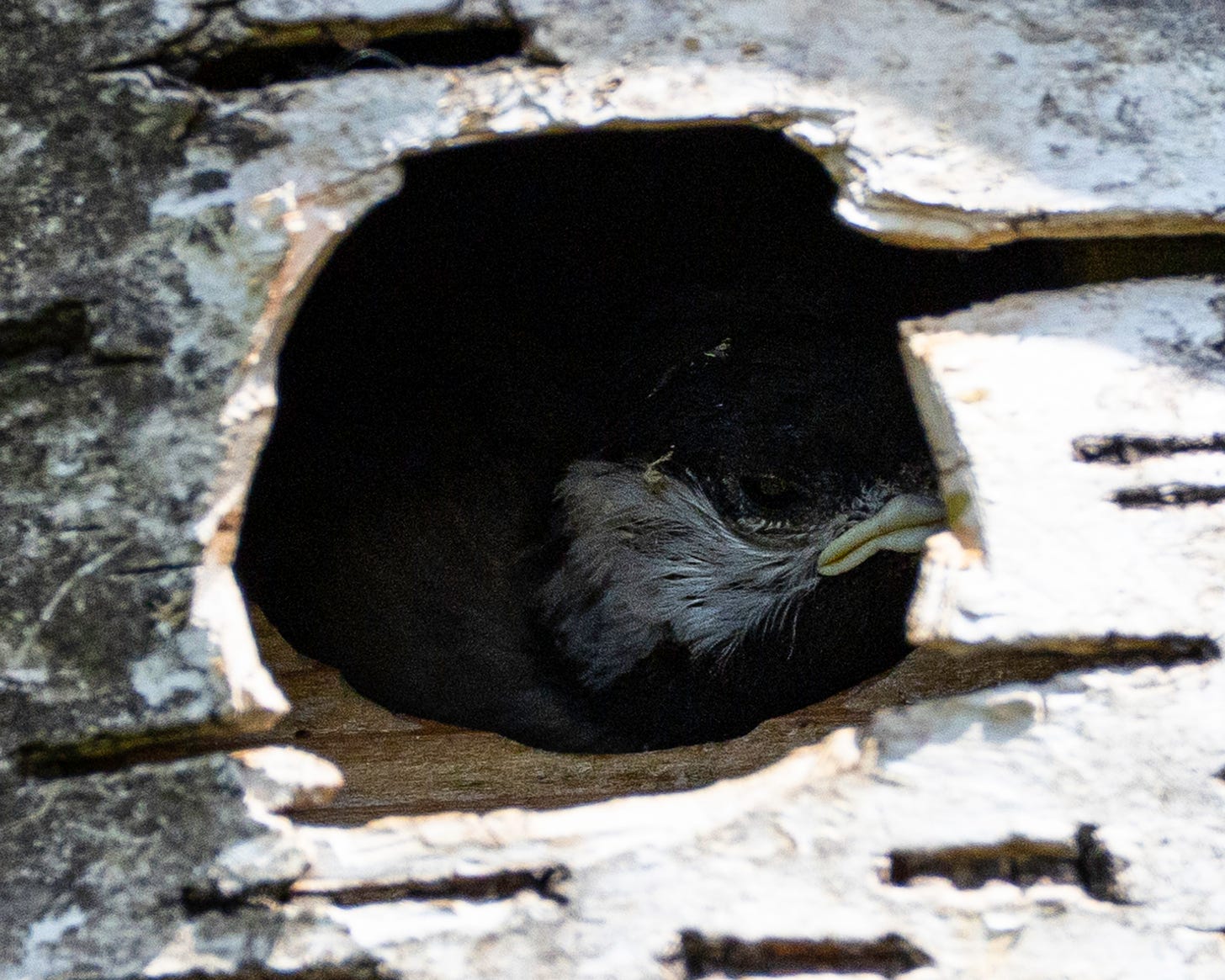
Beyond the chickadee zone, I encounter volunteer sunflowers that sprouted from last year's plants along with basil, black currants, anise hyssop, kale, sorrel, and black haw viburnum trees. I am standing under the spreading limbs of a ten-year-old European pear that I grafted from a tree in our neighbor's yard. A tangle of black raspberries defines the border between our yard and our neighbor’s. The berries are starting to form and will be ripe in late June.
Just beyond the canes, a flash of brown. A bundle of energy and attitude bounces from limb to limb. I am in House Wren territory. A pair has taken up residence in a nest box mounted on a grapevine trellis under a large Red Oak. I peek through the canes, and a wren is perched on the box watching me. The male is pouring forth his remarkable song nearby. She does not move. I watch for a few seconds and then back away.
I turn around and walk back along the southern edge of our garden, past perennial onions, raspberries, serviceberry, and strawberries. Our beloved red to-the-core strawberries have been ripe for about a week now, and the raspberries are just starting to ripen. I forage on dew-wet berries on my way to the honeyberry patch back by the robin’s nest. The robins discovered the honeyberries last week and have eaten most of them. I am happy to share. We will soon be overwhelmed with berries, and we will be picking ripe berries from our garden every day from now through October.
“It is a grand fact that you cannot make the fairer fruits or parts of fruits matter of commerce, that is, you cannot buy the highest use and enjoyment of them. You cannot buy that pleasure which it yields to him who truly plucks it. You cannot buy a good appetite even. In short, you may buy a servant… but you cannot buy a friend. “
Henry David Thoreau
My morning walk in the garden is comforting. I like to start the day with this heart-centered activity that helps me tune into the dictates of my inner nature. This sets me up to hold that perspective throughout the day in the face of the homogenizing dictates of our modern culture.
“I enter a swamp as a sacred place,—a sanctum sanctorum. There is the strength, the marrow, of Nature. The wild-wood covers the virgin mould,—and the same soil is good for men and for trees... A town is saved, not more by the righteous men in it than by the woods and swamps that surround it. A township where one primitive forest waves above while another primitive forest rots below — such a town is fitted to raise not only corn and potatoes, but poets and philosophers for the coming ages. In such a soil grew Homer and Confucius and the rest, and out of such a wilderness comes the Reformer eating locusts and wild honey.”
Henry David Thoreau
The following morning held a few surprises. I heard Tufted Titmice calling, but something was different. A pair of adults are regular visitors to our feeder, but the quality of the calls this morning was unusual. I looked over by our small pond and noticed three titmice perched on the low-hanging branches of a tart cherry tree. They were oddly still and very noisy. They also had the rough and goofy look of fledglings. That is when it dawned on me that I was watching a titmouse pool party. The adults brought their young to our yard, and they were exploring the pond. They hopped, ran, flew, splashed in the water, and squabbled with each other just like kids.
They were learning to forage, but they were not very good at it. Their parents kept feeding them insects. The young called and begged constantly as they were exploring. They poked and prodded at everything in front of them, including elderberry flowers and the bark of the tart cherry tree. I watched one young bird catch and eat an Assassin Bug. She seemed to be surprised by the wiggling life in her bill. She struggled to subdue her prey. I was seeing the transition to adulthood. She was building up her skills and experience.
A few more steps down the path and I became aware of the Chickadees. They were calling a lot. I saw both adults near the nest box, and I scanned the fruit trees nearby. A flash of movement in front of me caught my eye. There on the tomato cage was a newly-fledged chickadee. He was calling constantly and looking around, seeing the wide world for the first time. His hair appeared to be parted down the middle and his brightly colored gape flange and throat were on display. These are honest signals of fitness and serve as a target for the parents when they are feeding young inside a dark nest box. He made a weak flight toward his parents, dropping as he flew and ending up fluttering in the foliage of an apple tree.
His parents stayed perched up high and kept calling him. Then, one of the adults dropped to the ground and made a hissing noise as it swooped over the back of a Chipmunk. The Chipmunk fled. Chipmunks may seem like cute seed eaters, but they are significant predators of birds.
The adults flew up into a large Basswood tree and called to their young. I could see two fledglings in the canopy of the tree, and the little guy in the apple tree flew up to join them. There was still at least one other young chickadee in the nest box. The adults’ jobs just got a lot more complicated. They were now calling constantly as they foraged to maintain contact with their dispersed young.
I watched one adult swoop in, slice a graceful arc through the air, and snatch a flying insect in its bill as it looped around and landed next to a fledgling in a seamless and astonishing display of grace and agility. If I were a judge at the Olympics, I would give this bird a perfect ten. It quickly stuffed the insect down the throat of the fledgling and took off to feed the next one.
We can now add four new chickadees as part of the aesthetic harvest from our garden.
What would the world be, once bereft
Of wet and wildness? Let them be left,
O let them be left, wildness and wet;
Long live the weeds and the wilderness yet.
Gerard Manley Hopkins
It is very gratifying to support birds in raising the next generation. To get to know them, be with them, and experience a small part of their complex lives. Just think how many more birds there would be if the 40 million acres of lawn in the US were made a little more bird-friendly. Lawns subjugate our personalities and connection to nature. The short grass embodies cultural values that make precious little room for flights of fancy, creativity, and our human nature. Lawns inhibit and clip what it means to be fully human. We need a little space to explore where we can express ourselves and stimulate our imagination while immersed in the wider web of life.
Hopefully, more people will find a balance between lawn and wild that works for them. Maybe the allure of chickadees will be the catalyst for change. A little more chickadee and a little less lawn would be a good thing.




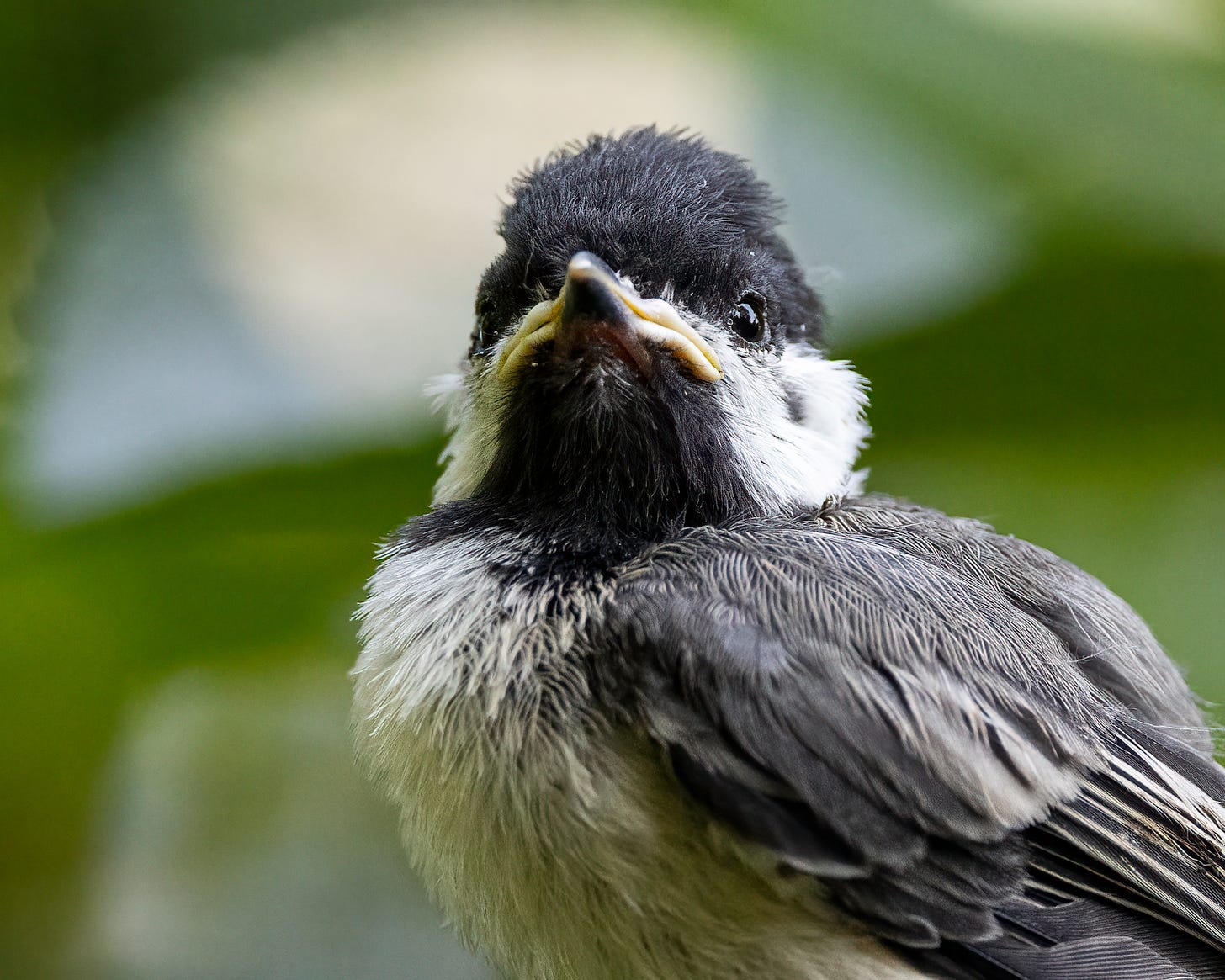
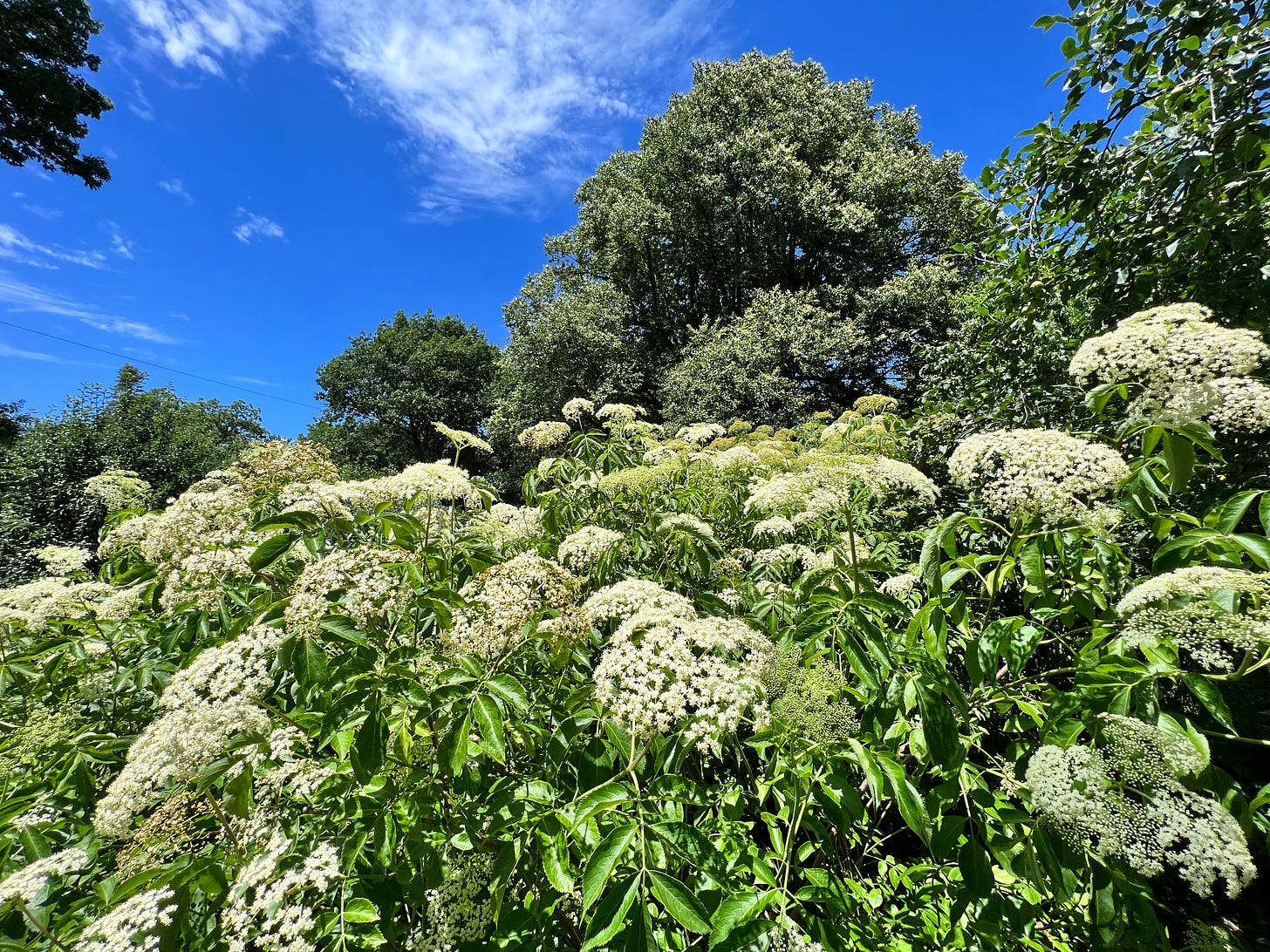
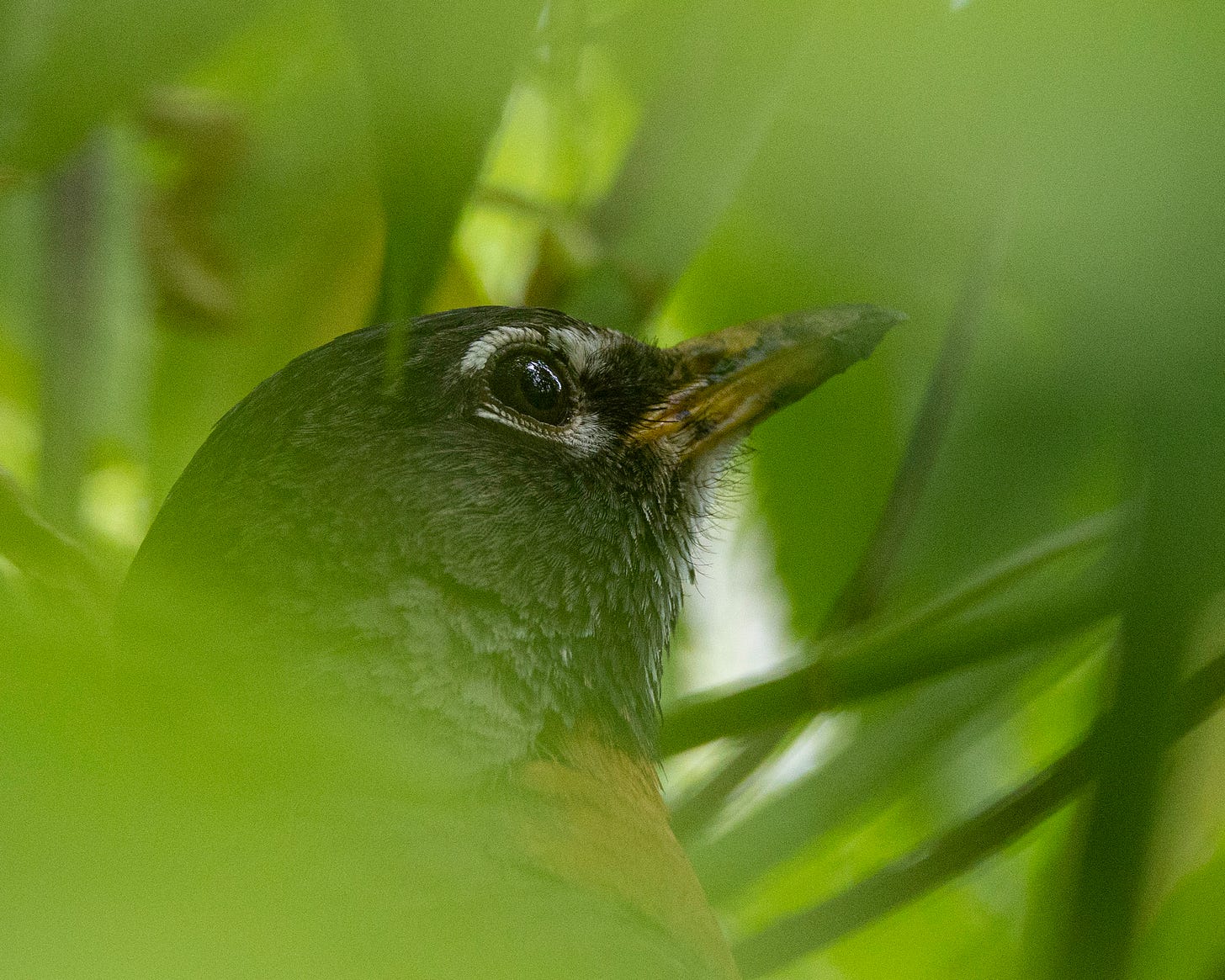
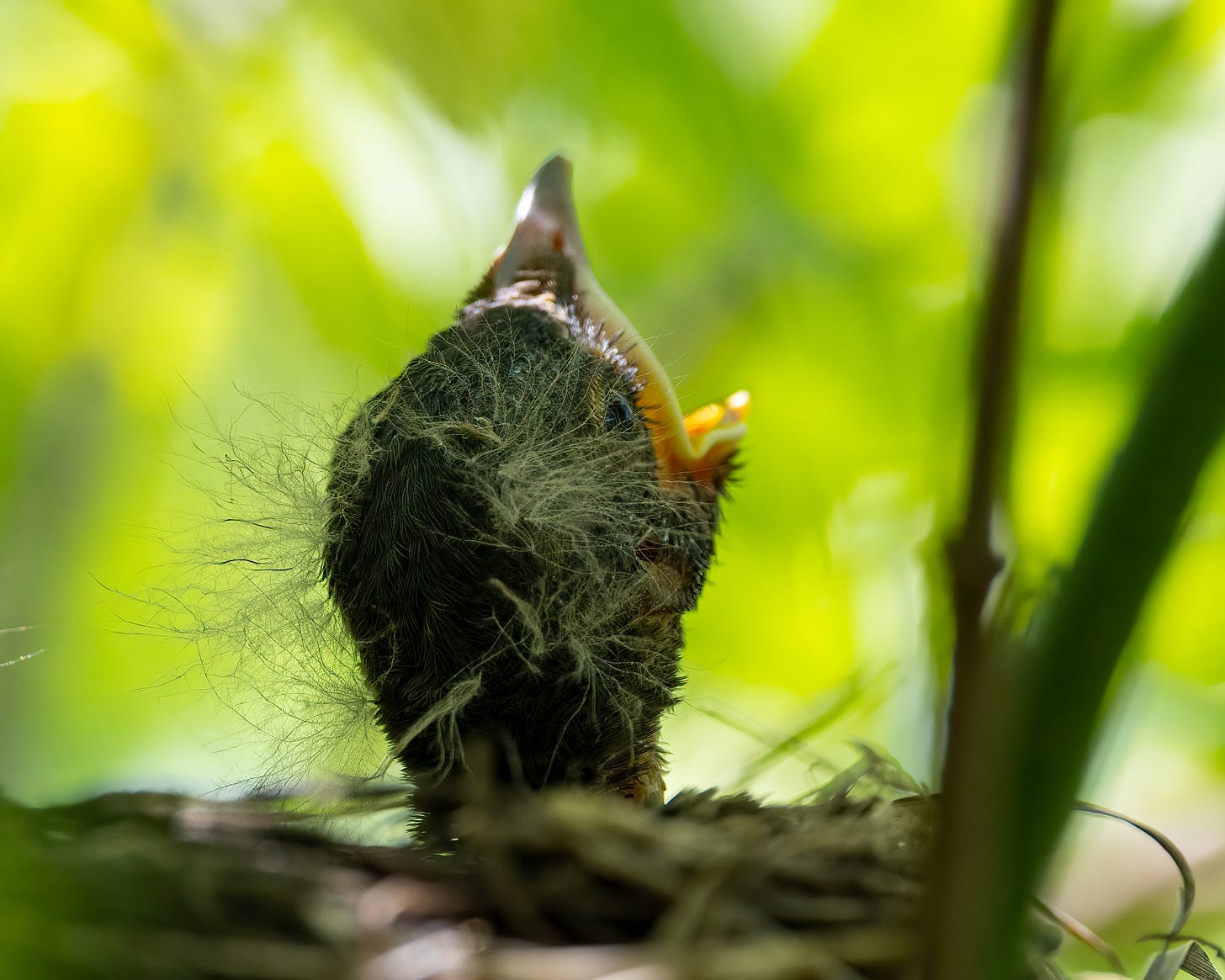
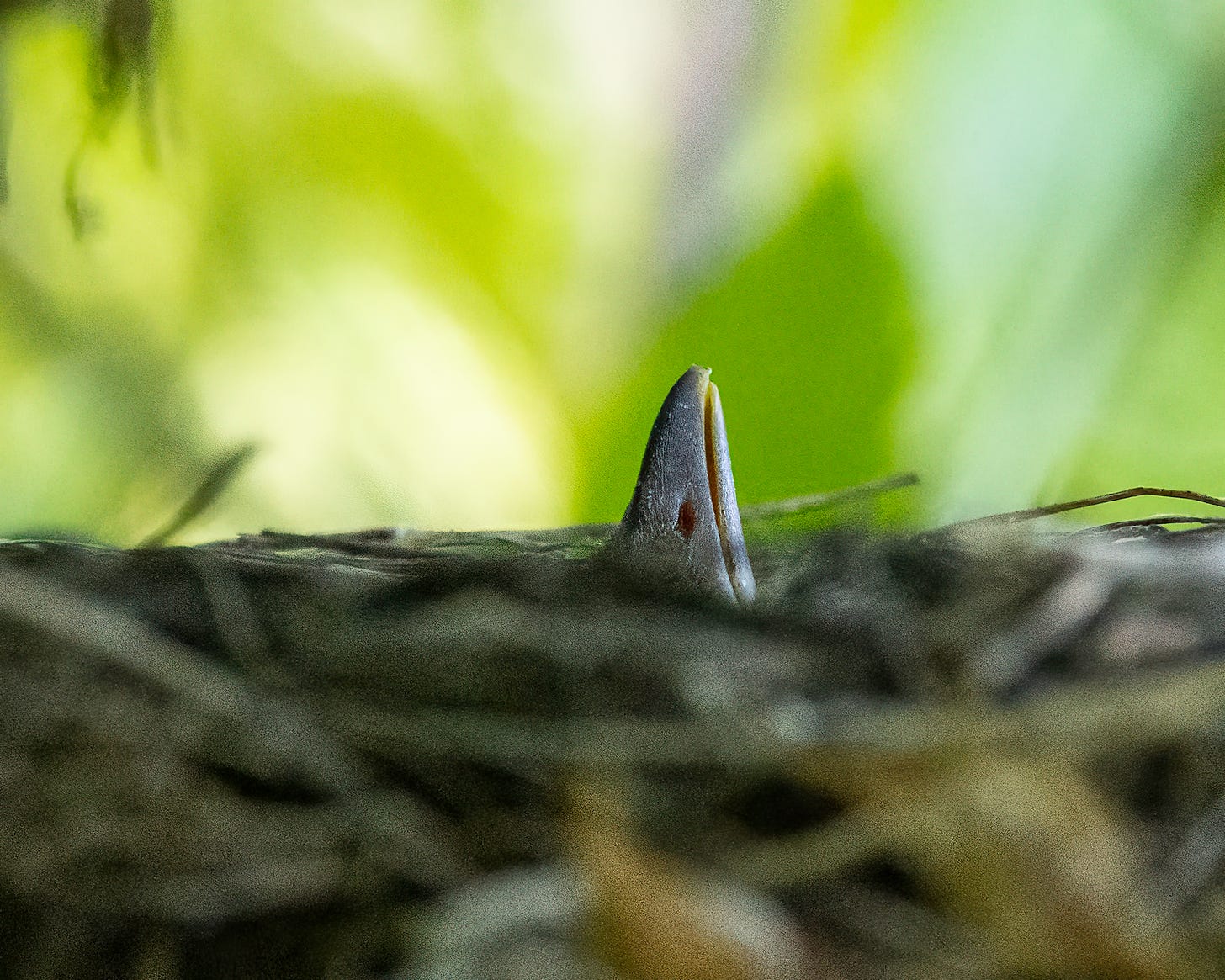
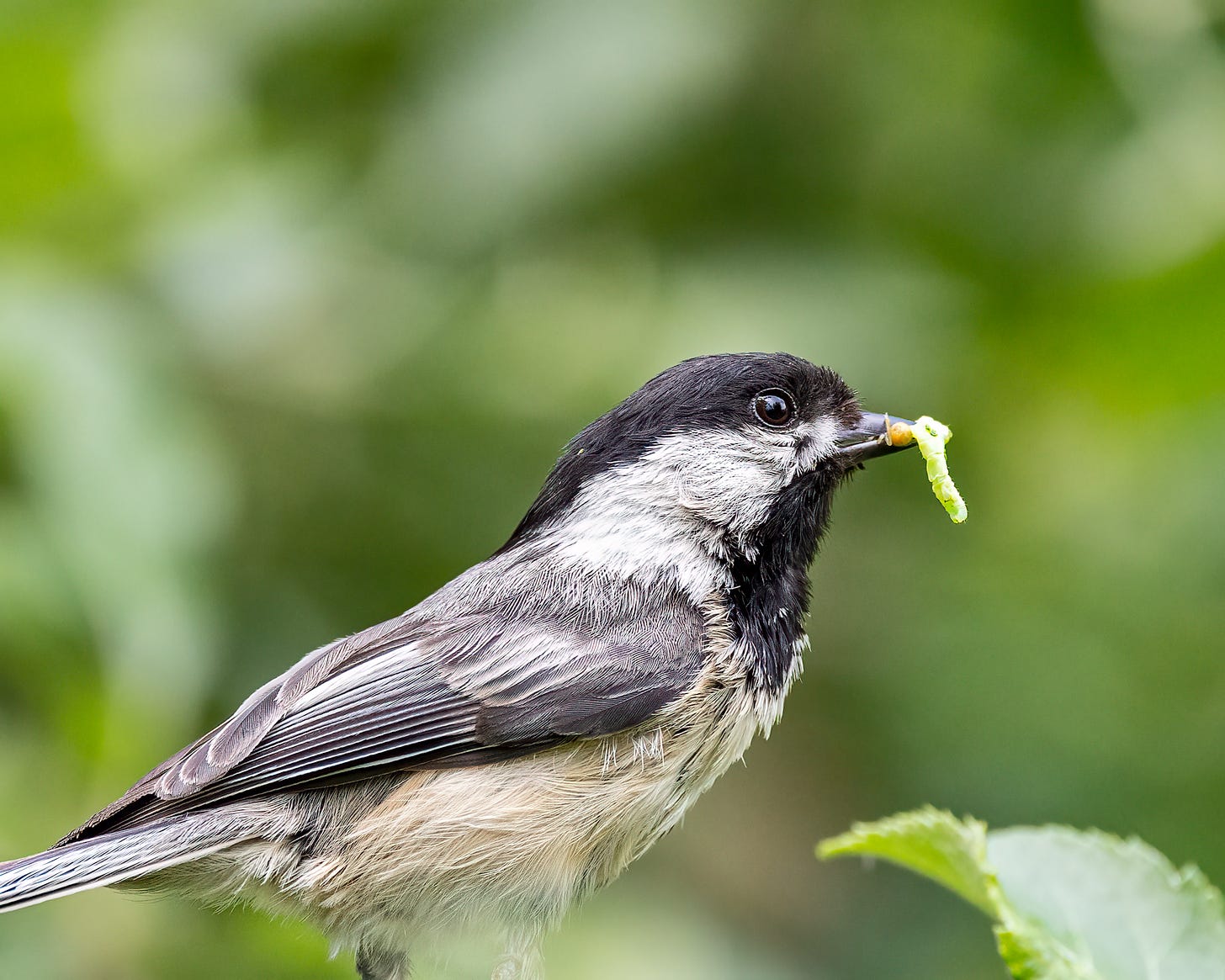
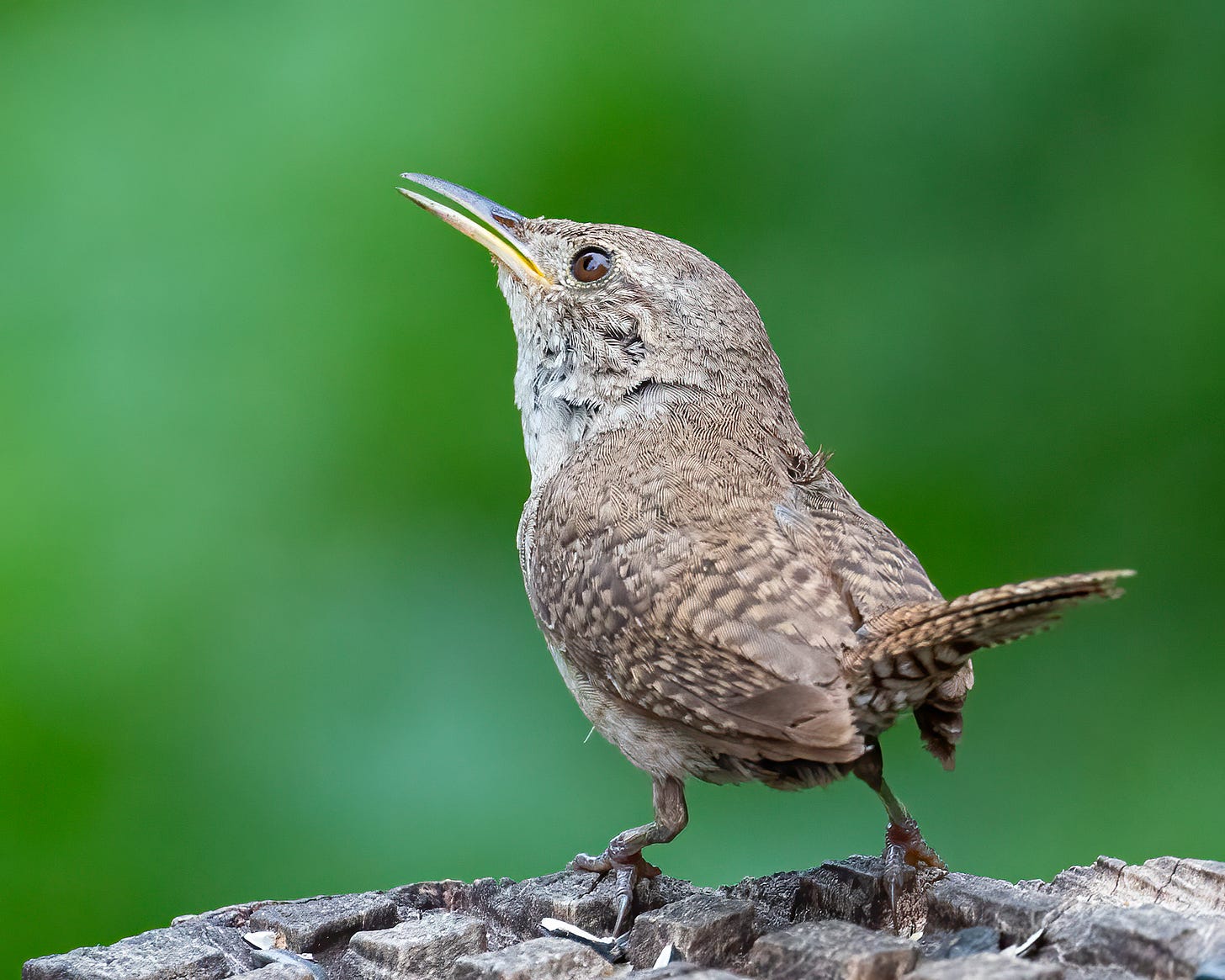

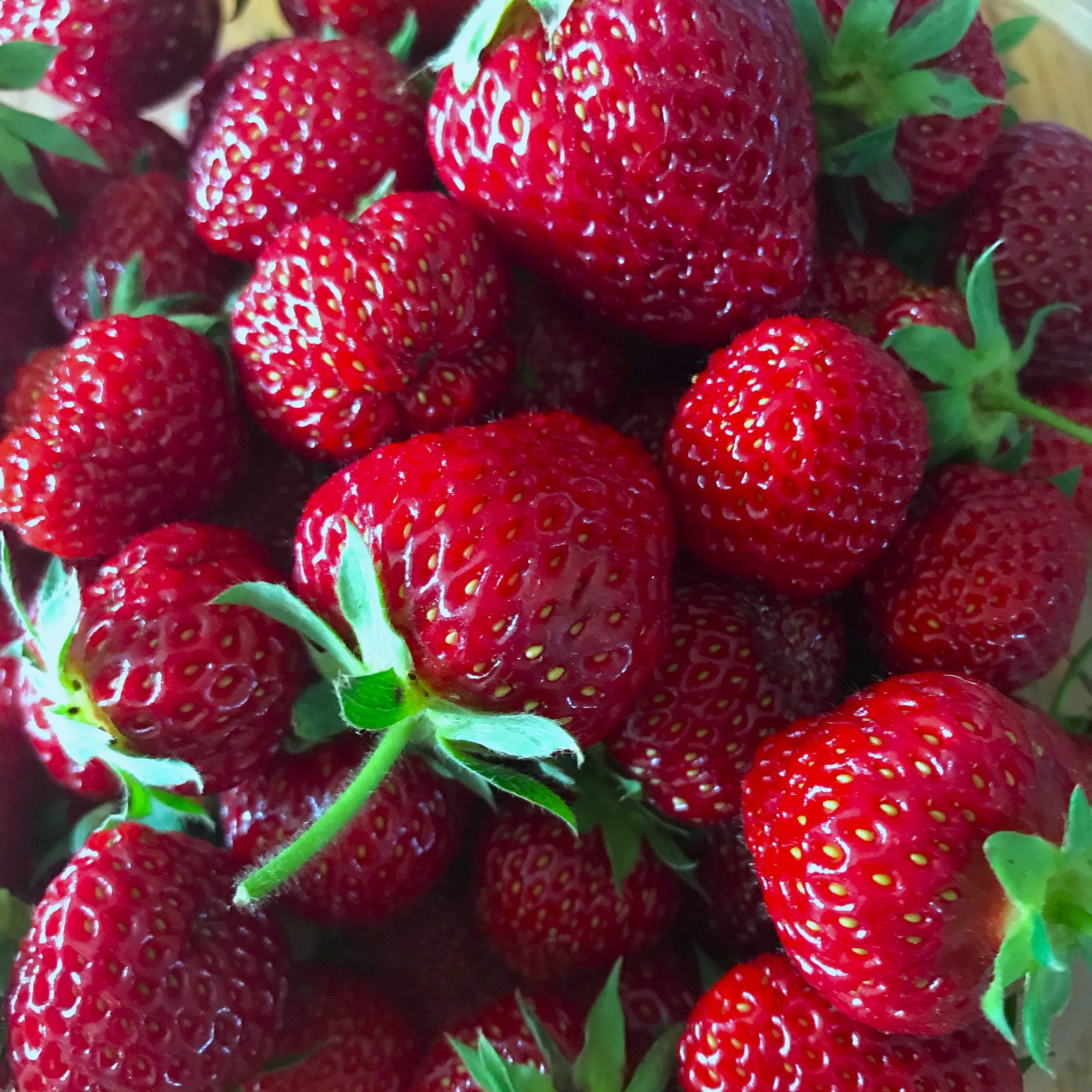
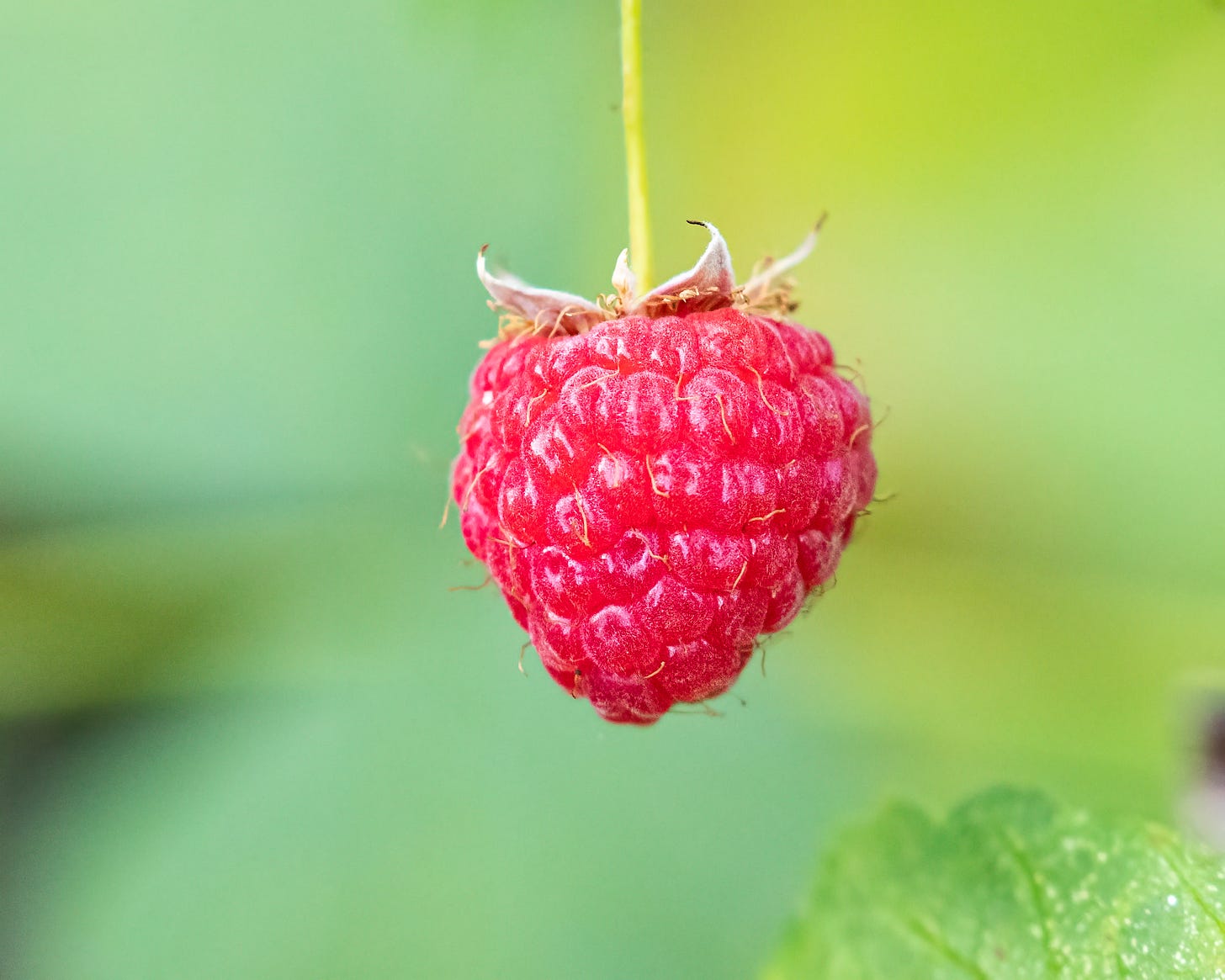
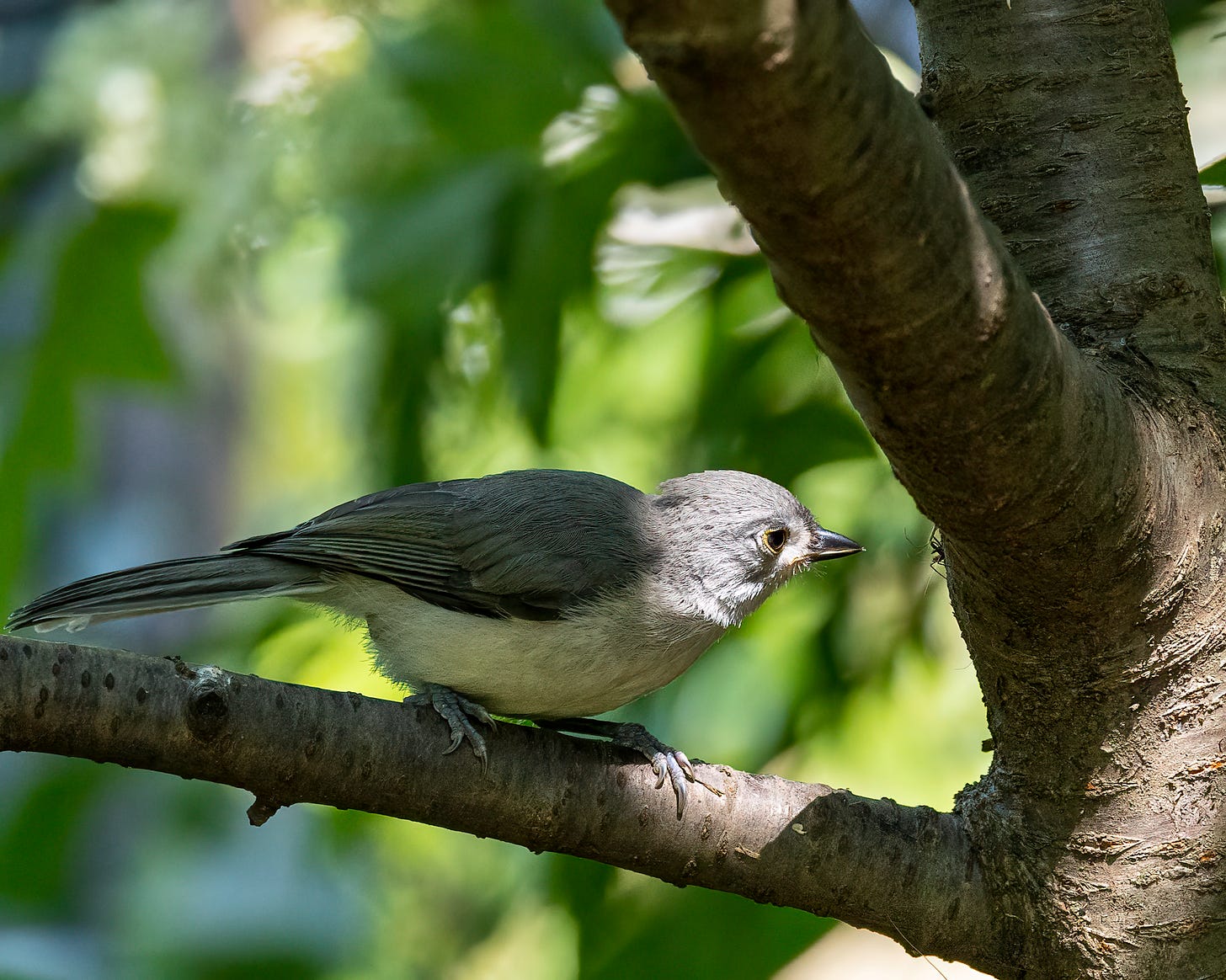
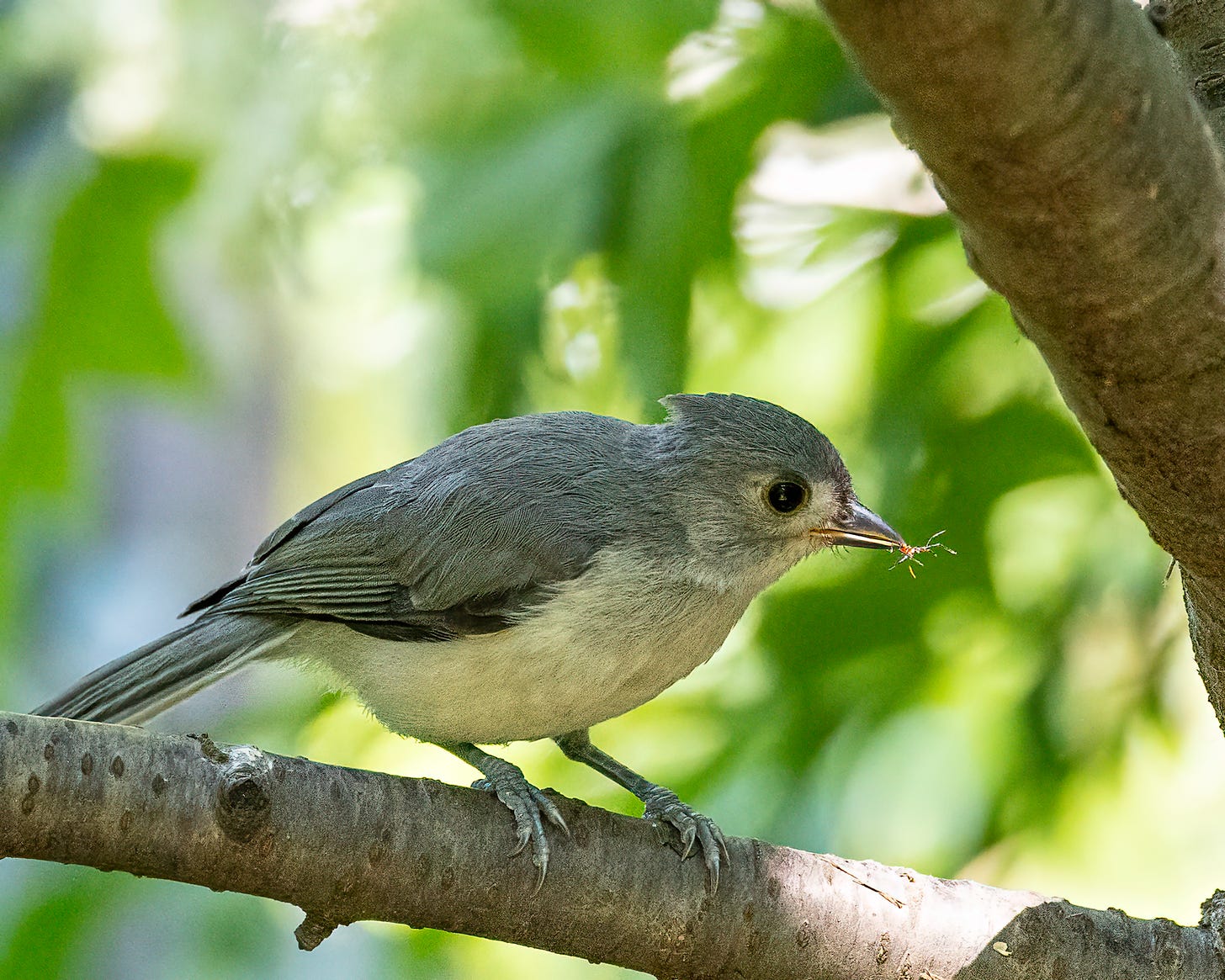
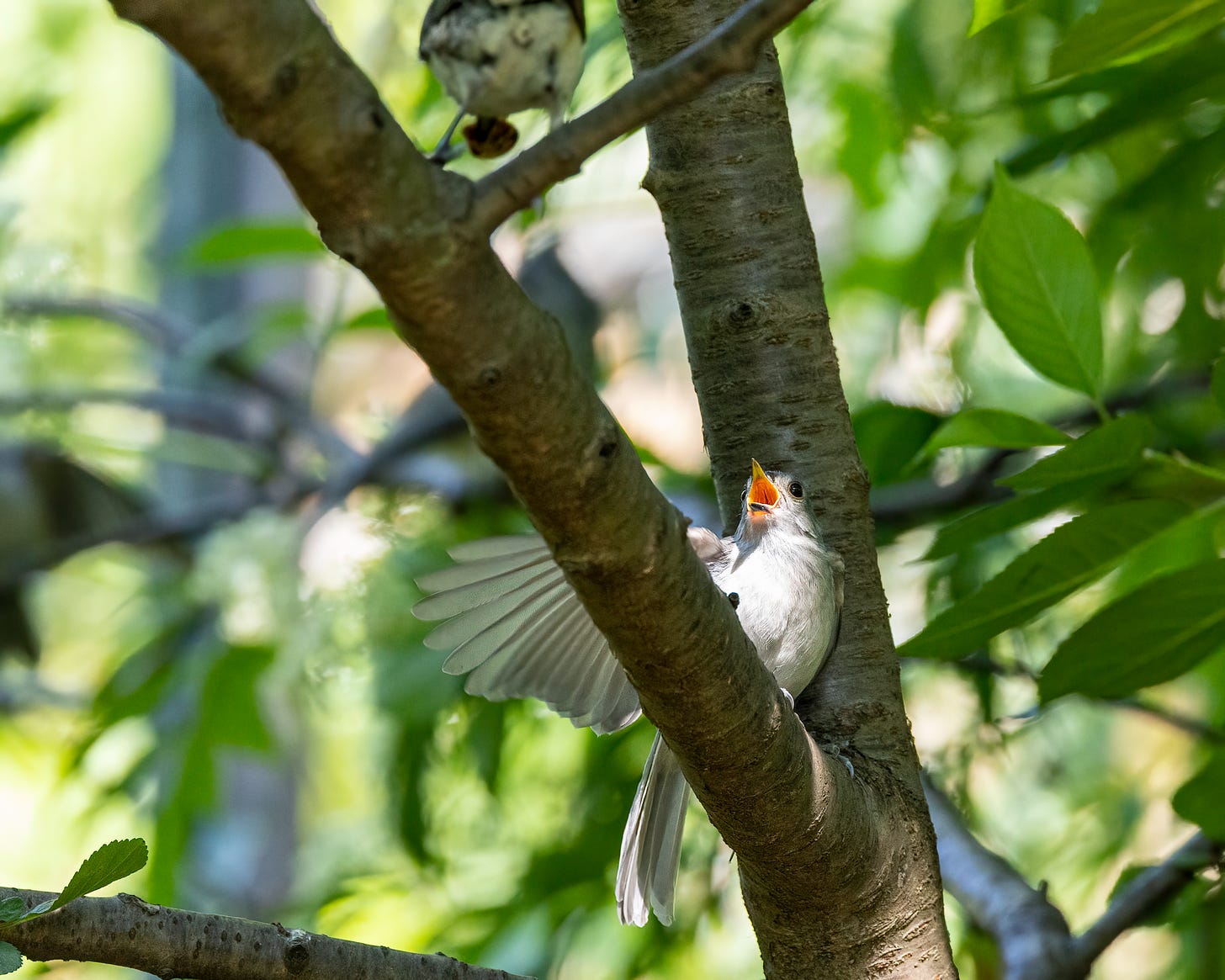
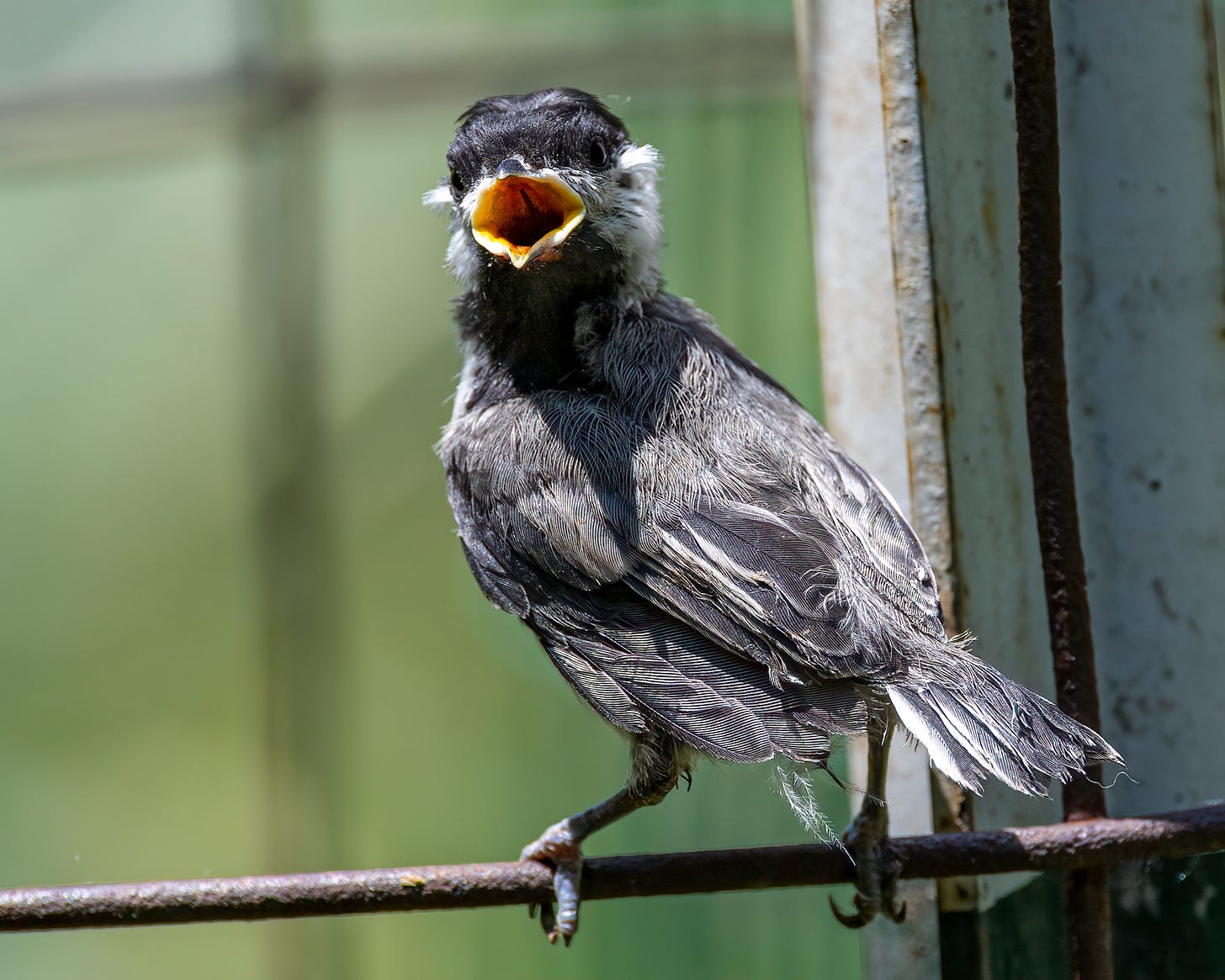

I Hope more people are inspired by you to let their yards just BE. I’ve allowed white clover in the front, but the back yard is naturalizing. Home to birds and bees. I’m hoping for frogs and turtles some day.
Thank you Bill for posting this. What a pleasure it is to "walk" through your yard with you.